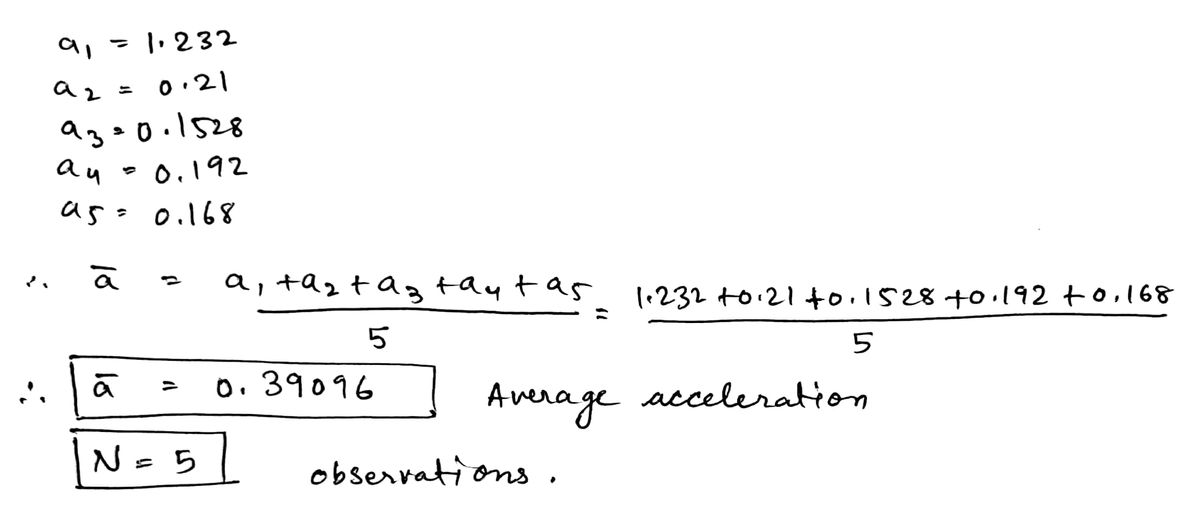Acceleration values: -1.232.a2 = Average acceleration = 0.39094 Standard Deviation = al = Standard error = 0.21 a3-0.1528,24 -0.192.as= D. 168 = a5
Displacement, Velocity and Acceleration
In classical mechanics, kinematics deals with the motion of a particle. It deals only with the position, velocity, acceleration, and displacement of a particle. It has no concern about the source of motion.
Linear Displacement
The term "displacement" refers to when something shifts away from its original "location," and "linear" refers to a straight line. As a result, “Linear Displacement” can be described as the movement of an object in a straight line along a single axis, for example, from side to side or up and down. Non-contact sensors such as LVDTs and other linear location sensors can calculate linear displacement. Non-contact sensors such as LVDTs and other linear location sensors can calculate linear displacement. Linear displacement is usually measured in millimeters or inches and may be positive or negative.
standard deviation?
standard error?
![## Physics Experiment: Measuring Acceleration and Force
### Acceleration Values:
- \( a_1 = 1.232 \)
- \( a_2 = 0.21 \)
- \( a_3 = 0.1528 \)
- \( a_4 = 0.192 \)
- \( a_5 = 0.168 \)
#### Calculated Values:
- **Average acceleration**: \( 0.39096 \)
- **Standard Deviation**: [Blank]
- **Standard Error**: [Blank]
### Experimental Setup:
#### Mass Measurement:
- **Mass of fan/cart assembly**: \( 782.0 \) grams
#### Force Calculation:
- **Formula**: \( F = ma \)
Given the measured acceleration and mass, calculate the force of thrust of the fan.
### Inclined Plane Experiment:
1. **Procedure**:
- With the fan cart operating on the same setting, raise one end of the track until the fan cart remains stationary on the incline.
2. **Measurements**:
- **Vertical displacement (\(\Delta y\))**: \( 1.5 \)
- **Horizontal distance (\(\Delta l\))**: \( 118 \)
3. **Trigonometric Calculation**:
- **\(\sin(\theta)\)**: \( 5.59 \)
- \(\theta = \frac{115}{118}\)
4. **Objective**:
- Determine the force of thrust of the fan using the mass of the fan cart (weight) and the angle of the track.
- If the fan is pushing up the incline, identify the force pulling down the incline.](/v2/_next/image?url=https%3A%2F%2Fcontent.bartleby.com%2Fqna-images%2Fquestion%2F6f35f976-9f8b-4bdd-8184-8e8cea971b73%2F7e9262b3-4baf-4bf3-af9d-524fc64e064a%2Fn4kconh_processed.png&w=3840&q=75)

Step by step
Solved in 2 steps with 2 images









